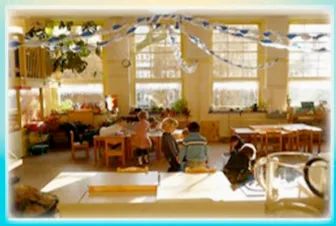'True peace [...] suggests the triumph of justice and love among men; it reveals the existence of a better world wherein harmony reigns." ~ Maria Montessori, Peace and Education, 1965
Is it possible that this better, more harmonious world--which Maria Montessori spoke of more than 50 years ago--could be within our making? After surviving two world wars and spending a lifetime observing the development of children, Montessori fully understood the connection between peace and the way we educate our younger generations. She also foresaw that by educating through a peace-based method, we hold within our grasp the power to change the future of humankind.
“An education capable of saving humanity is no small undertaking; it involves the spiritual development of man, the enhancement of his value as an individual, and the preparation of young people to understand the times in which they live.” ~ Maria Montessori
Powerful stuff indeed! But how realistic is this? Can the Montessori Method actually teach children peace? Actually, you can find the answer to these questions simply by visiting a Montessori classroom...
 The prepared environment includes a strong focus on respect, courtesy, and beauty.
The prepared environment includes a strong focus on respect, courtesy, and beauty.

Upon first experiencing a Montessori classroom, most adults are utterly amazed by the calm, orderly, careful, and courteous behavior of the young pupils. How can this be? they wonder aloud. Do the children attend peace classes? Actually, peace classes aren't needed because the pervasive lesson of peace is modeled, experienced, and absorbed by the children--spontaneously and naturally. The prepared environment includes a strong focus on respect (for one another and for the materials,) courtesy, and beauty. This is the embodiment of peace and the children soak it in, just as flowers soak in the sunshine.
“Education cannot be effective unless it helps a child to open up himself to life.”~ Maria Montessori
 "There is a communication and harmony between that one seldom finds between the adult and the small child."Very young children (between the ages of two and six) begin to develop empathetic abilities. They become aware of other people and their separate needs. Now is the time to teach social skills such as using your “please and thank you’s,” and saying “excuse me” or “I’m sorry” in applicable situations. The Montessori Method calls these the lessons of “grace and courtesy.”
"There is a communication and harmony between that one seldom finds between the adult and the small child."Very young children (between the ages of two and six) begin to develop empathetic abilities. They become aware of other people and their separate needs. Now is the time to teach social skills such as using your “please and thank you’s,” and saying “excuse me” or “I’m sorry” in applicable situations. The Montessori Method calls these the lessons of “grace and courtesy.”
"Our schools show that children of different ages help one another. The younger one sees what the older ones are doing and asks for explanations. There is a communication and harmony between the two that one seldom finds between the adult and the small child.”~ Maria Montessori
A successful, integrated social life becomes more and more important to children after about age six. Children become fully aware of their relationships and interactions with others. Concepts such as fairness, honor, and justice are of particular interest. The Montessori Method continues to model respect, integrity, harmony, and social grace. Children are given the chance to express themselves and experience learning in an environment carefully prepared to fulfill their needs and encourage personal progress.
“What is social life if not the solving of social problems, behaving properly and pursuing aims acceptable to all? sitting side by side and hearing someone else talk…”~ Maria Montessori
Whatever their age, children have a beautiful propensity toward peace. Each child carries within them the ability to bring about “…the existence of a better world wherein harmony reigns.” If we adults can nurture the innate promise within our children, we just might live to see the day that the world actually becomes a better place.
“The child is both a hope and a promise for mankind.” ~ Maria Montessori





















